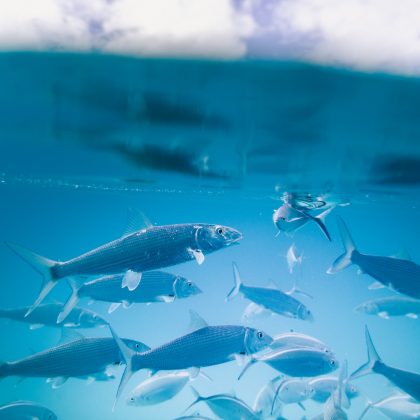Dead Man’s Fingers in Silurian Seas
The digit-like branches of Codium, or Dead Man’s Fingers, are a common sight in modern day salt-water bays and lagoons, particularly in areas impacted by fertilizer-rich runoff. As with other members of the abundant and diverse group of green algae called Bryopsidales, Codium is remarkable in being a giant single-celled organism, its distinctive thalli reaching heights of a half-meter or more. Look carefully, and you’ll see that its deceptively simple branches consist of dense networks of thin interconnected and intertwined tubes, these carrying, along with chlorophyll-green chloroplasts, a multitude of nuclei (bryopsidalean algae are unicellular, but multinucleate). In a report recently published in the Journal of Paleontology, fossils are described that show that seaweeds with an overall form and complex internal architecture comparable to Codium were already present in shallow marine settings by the early part of the Silurian Period, some 438 million years ago.
The fossils examined were, for the most part, not new to science, with some having been collected almost 150 years ago from famed eurypterid-bearing beds near Buffalo, New York. For almost as long, paleontologists have debated whether they represent the remains of plants (algae) or animals, such as graptolites or hydroids. Questions in paleontology rarely get more basic. In an attempt to definitively answer that question, the material was subjected to a multi-pronged approach that involved various imaging techniques, including scanning electron microscopy, chemical analyses (focusing on stable carbon isotope composition), and 3D reconstruction facilitated by a computer graphics program called Blender. The investigation was also aided by well-preserved material not examined in previous studies, including specimens from a newly discovered deposit dominated by the remains of noncalcified macroalgae (i.e., an “algal-Lagerstätte”).
The results in all cases pointed toward the same conclusion: the fossils are the remains of macroalgae with a form and anatomy similar to Codium, the branches comprising bundles of tubes divided into distinct medullary (central) and cortical (outer) zones. On the basis of small-scale differences involving the medullary and cortical tubes, as well as more conspicuous differences pertaining to the overall branching pattern, two distinct genera, Thalassocystis and Inocladus, are recognized, with the latter incorporating four species.
Considered in broader terms, building a better understanding of seaweeds in the history of life is important because they form key elements of shallow marine ecosystems, providing not only food but also shelter and substrate for animals. As such, they are central to understanding how shallow marine ecosystems function, and how and why they might change through time. Thus, it is noteworthy that the origination of Codium-like seaweeds coincides with a large-scale evolutionary revolution among marine macroalgae that began during the mid-Ordovician, the outcome of which saw the simple forms that dominated Ediacaran and Cambrian seas displaced by relatively much more complex forms built to tolerate grazing. Moreover, because this “Paleozoic Macroalgal Revolution” played out against a backdrop of extraordinary animal diversification known as the Great Ordovician Biodiversification Event (GOBE), it is likely that it represents something of an evolutionary arms race, driven by the rapid evolution of new and improved types of herbivory.
“Codium-like taxa from the Silurian of North America: morphology, taxonomy, paleoecology, and phylogenetic affinity” by Steven T. LoDuca, Anthony L. Swinehart, Matthew A. LeRoy, Denis K. Tetreault and Shawn Steckenfinger has been published in Journal of Paleontology, published by Cambridge University Press on behalf of the Paleontological Society. The article has been made freely available for a limited time.
Read other blog posts from Journal of Paleontology here
or view all blog posts from the Paleontological Society Journals






